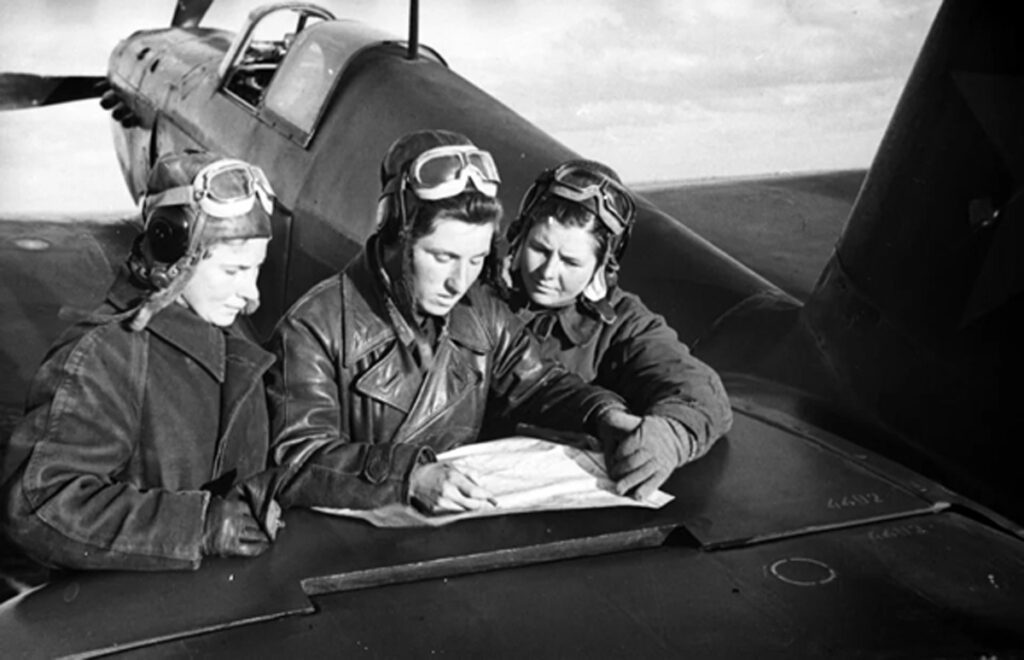The 588th Night Bomber Regiment (unofficially known as Night Witches) wasn’t the Soviet Union’s only all-women flying regiment to fight during World War II. The women Marina Raskova recruited in October 1941 were formed into three regiments: the 586th Fighter Aviation Regiment, the 587th Bomber Aviation Regiment, and the 588th Night Bomber Regiment. Raskova assigned the women who tested the best to the 586th.
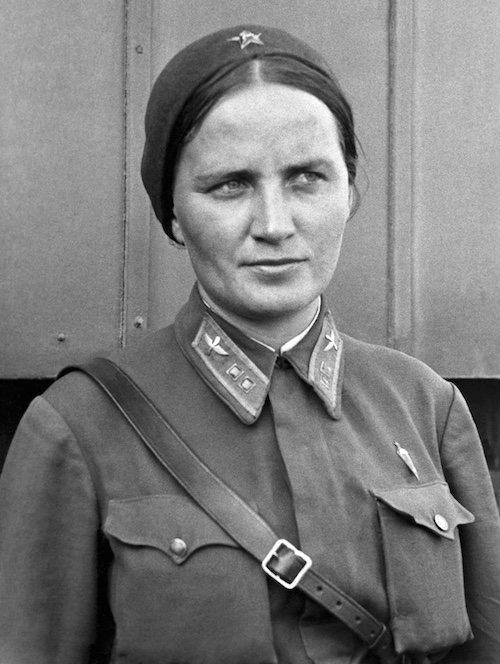
Training
In October, 1941, Raskova began recruiting women to be pilots, navigators, mechanics and ground crew for the three groups. So many recruits were qualified pilots that some had to serve as navigators, but the women agreed because they wanted to fight. At the time, women’s uniforms didn’t exist because few women flew in the Soviet military. So they were given bulky men’s uniforms and boots that were too oversize. In 1943, the women finally received women’s dress uniforms that fit them, but when flying they still had to manage with their oversize men’s uniforms.
The women trained from October 1941 to May 1942. Training included multiple piloting classes each day, mechanical instruction, classes on performing aviation tasks, and two hours of drill. Pilots had to accumulate a minimum of 500 flying hours. Marina Raskova and her staff kept an eye on her recruits to see how well they performed, which determined which regiment they would be assigned to. She put the top-performing trainees into the first group formed: the 586th Fighter Aviation Regiment.
In February, the pilots and other members of the 586th went in-person to the factory to pick up their planes, which were brand new Yak-1 fighters. At the time, there was a surplus of pilots and too few planes to go around. When the women arrived, the factory staff were outraged that a “bunch of girls” didn’t want to wait their turn for planes that male pilots had been waiting for for quite some time. But once they met the “girls,” the staff took back their words. The women were eminently qualified.
The 586th received ten planes. All the planes had radios, but only the squadron commander’s radio could send and receive. The others were receive-only. The women refused to fly unless they got send-and-receive radios too. Using her high-level contacts, Raskova got the radios for them – almost a year before the military decided to put them in all fighter planes.
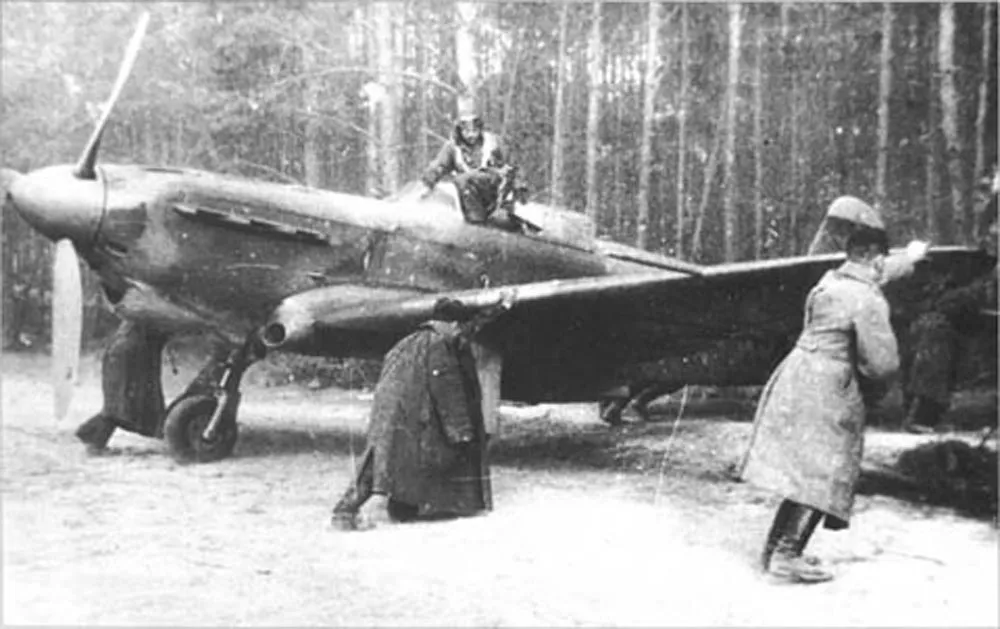
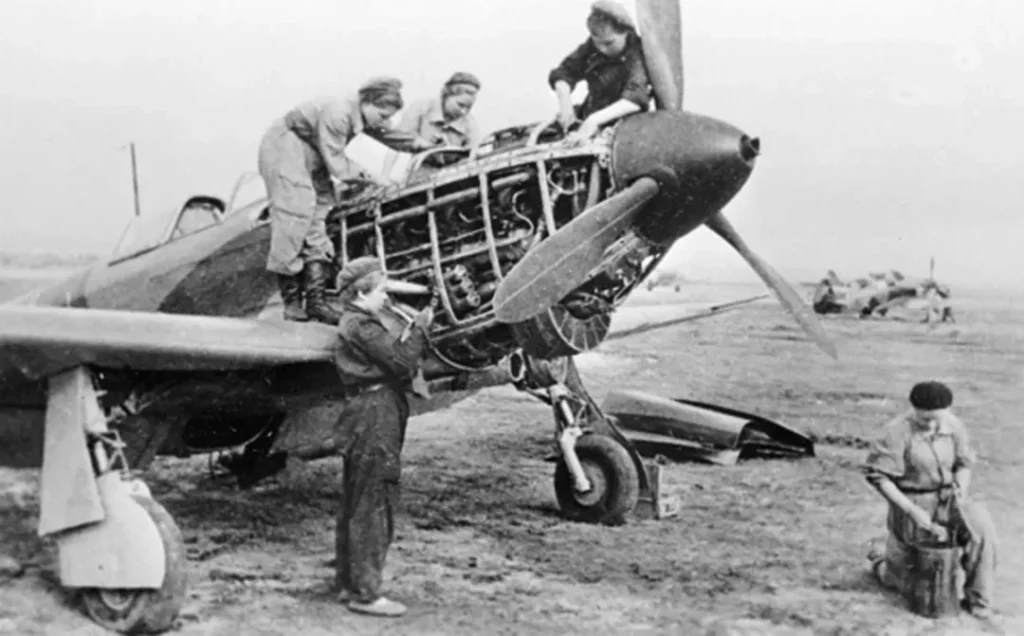
Taking on the Enemy
The 586th flew behind the front lines. They had two missions: escorting very important people, which represented about seven percent of their sorties, and combat sorties. The combat sorties focused on attacking German bombers and their fighter escorts, whose mission was to destroy Soviet factories, railway junctions, and other vital targets.
Over time, the 586th lost pilots in combat and through assignments to male fighter regiments by their first commander, Tamara Aleksandrovna Kazarinova. Because of a scarcity of trained woman pilots, an all-male squadron was added to the 586th, and the regiment ceased being an all-woman one.
Unlike the pilots of the 587th and 588th, not a single female pilot in the 586th ever received a Hero of the Soviet Union award while in the regiment. Why? Because operating behind the lines never gave them the same opportunities as the pilots in the other two regiments, which fought on the warfront. Also, Kazarinova – out of personal animosity – may have intervened to deny them the recognition they so justly deserved.
However, several did receive awards and became aces after being transferred out of the regiment and into mixed-sex regiments on the warfront. Lilya Litvyak became the first woman to shoot down an enemy plane, the first female ace, and was awarded a Hero of the Soviet Union medal. Valeriya Khomyakova was the first woman pilot to shoot down an enemy plane at night. Katia Budanova became an ace too.

All told, the 586th did compile an impressive record of combat sorties: 4419, which represented 4794 hours of flying. Sorties included escorting bombers and ground attack aircraft, providing cover for battle formations on the ground and for troop movements, and patrolling over fixed targets.
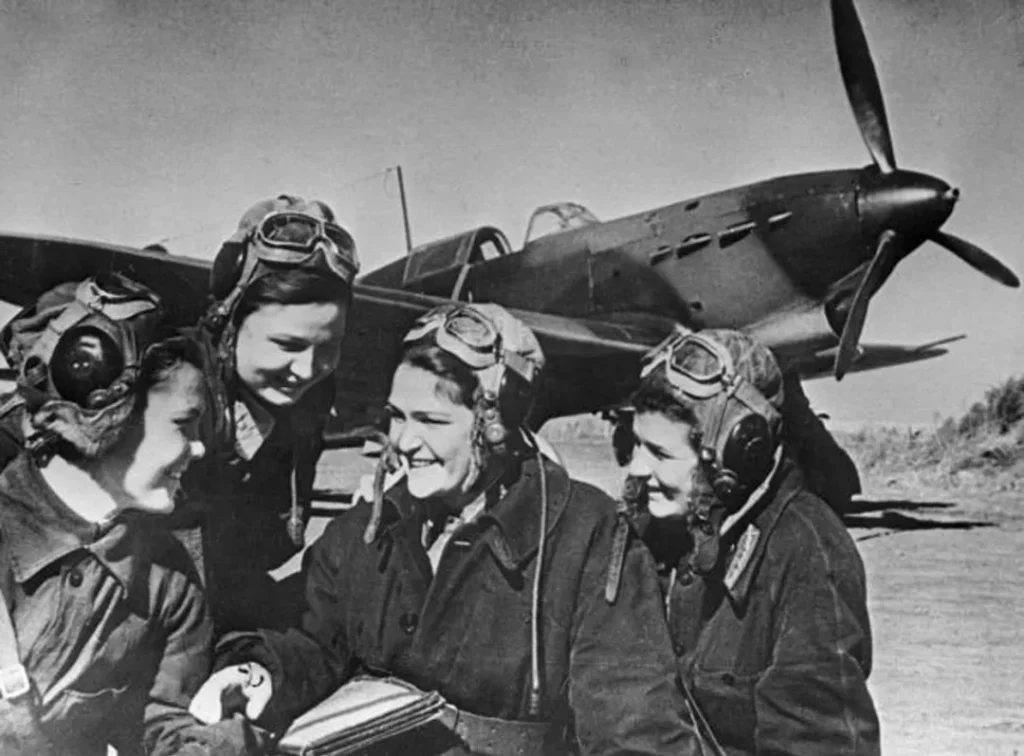
Dissension Within the Ranks
On April 16, 1942, the 586th went into active service under the command of Major Tamara Aleksandrovna Kazarinova. She lasted only six tumultuous months. She didn’t fly, either because she was unfamiliar with the Yak-1 or because of a leg injury. She also was close to Lieutenant-General Aleksander Stepanovich Osipenko, who gave her command of the 586th. Osipenko headed Fighter Avation and didn’t have a clue about tactical fighting and fighter planes. Many of the women, especially the most skilled fighter pilots, openly opposed Kazarinova.
Kazarinova – with Osipenko’s willing cooperation – transferred her most vocal critics to other fighter regiments on the front lines. These women gained reputations as hard-hitting fighter pilots. But by mid-1943, many of them were dead – some under suspicious circumstances. Kazarinova’s critics believe that she and Osipenko had intended for them to be killed and that they were behind giving them assignments that would lead to their deaths.
Many in the 586th continued to agitate for Kazarinova’s dismissal until she was finally relieved of command, and ended up on Osipenko’s staff.
Lieutenant-Colonel Alexander Gridenev, who had commanded the 82nd Fighter Aviation Regiment, replaced Kazarinova, which put the 586th under a man’s command for the rest of its existence. Gridenev was given the command as a punishment for refusing to allow his pilots to fly in a dust storm. At first the women were upset about being commanded by a man but over time Gridenev won their respect and the women ended up supporting him. In turn, he became their most ardent supporter.
In 1943 Kazarinova apparently continued her vendetta against the 586th when the regiment was slated to receive the coveted Guards designation. The photographs were taken and a film crew shot scenes of the planes engaged in live combat. When all the paperwork and associated materials were ready to go, Kazarinova stopped by to pick them up…but the documentation never reached its destination and the 586th never received its Guards designation.

Disbandment
After the war, most of the women in the military were demobilized. Many of the women, worn out by years of strenuous service, went home to recuperate, marry, and start families. Some wanted to continue flying but couldn’t because the old gender roles were put back in place. Some women’s husbands forced them to choose between a family and a career. (At least one woman had to choose between a raising a family and getting a divorce.) And other women were unable to fly because of wounds received in combat.
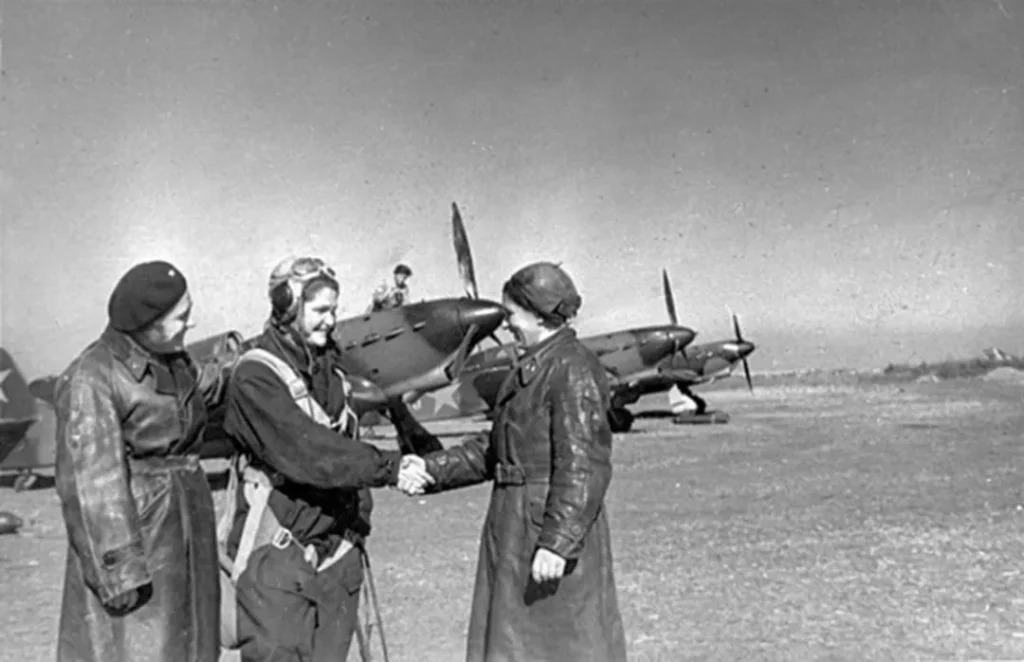
However, many women couldn’t stand the thought of not being involved in aviation in some way or another. Some managed to get jobs flying light ambulance planes or twin-engine planes. Others became mechanics while many accepted low-status and poor-paying jobs related to flying.
Most of the women, though, went back to performing the primary duty expected of most women in the Soviet Union: having kids and raising families for their country.
This post is Part 2 in a series about Soviet women pilots in WWII. Upcoming posts will discuss the 587th Bomber Aviation Regiment and highlight the achievements of individual pilots. For Part 1 on the 588th Night Bomber Regiment “Night Witches,” click here.

